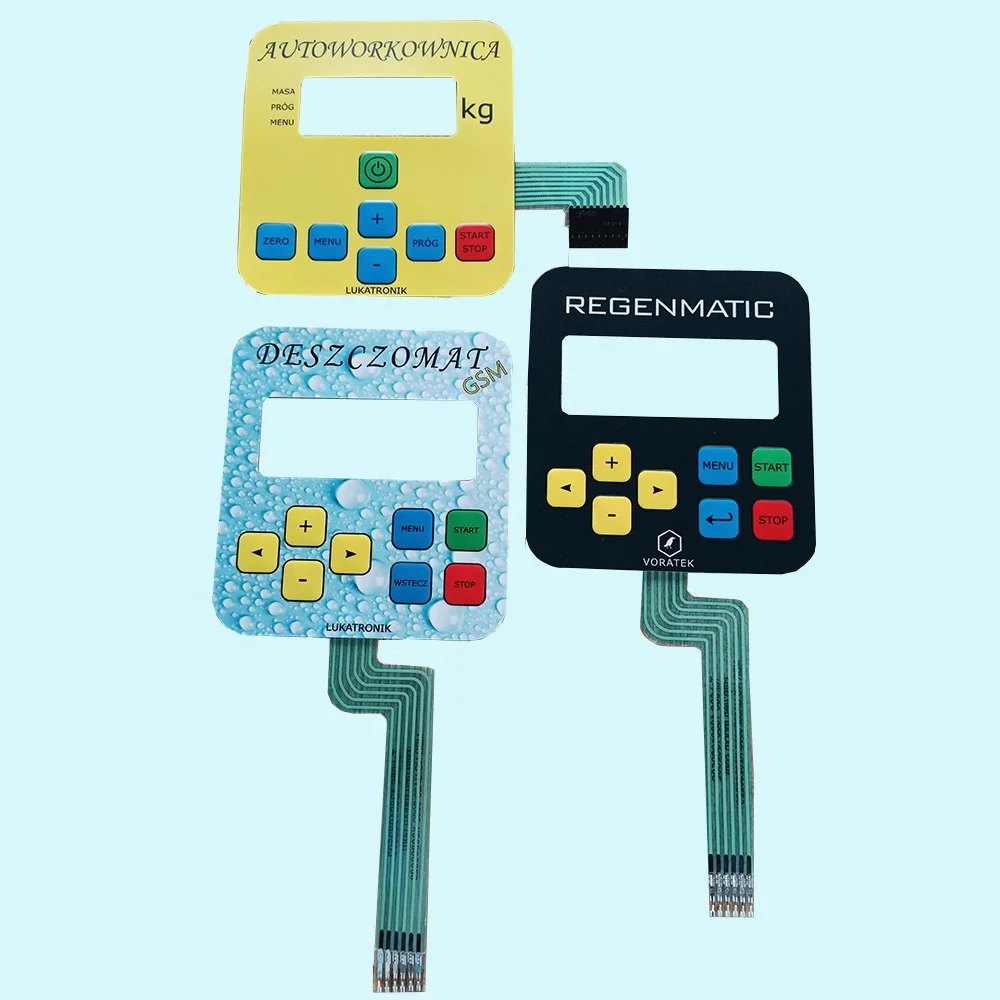Comprehending Membrane Layer Changes: The Secret to Sturdy and Reputable Controls

What Are Membrane Layer Buttons?
Membrane switches are an innovative remedy in the world of interface innovation, integrating capability and style effortlessly. These gadgets work as a user interface in between customers and electronic systems, incorporating a number of parts right into a portable layout. Typically constructed from adaptable, thin layers of products, membrane layer buttons are created to react to touch, allowing users to connect with equipment and electronic gadgets properly.
The key aspects of a membrane layer switch include a printed circuit layer, graphic overlay, and a spacer layer that protects against unintended activation. The graphic overlay can be personalized to show brand name identification or customer choices, improving appearances while making certain use. Membrane buttons are frequently made use of in numerous applications, including clinical devices, customer electronics, and industrial tools, owing to their longevity and resistance to environmental variables such as wetness and dirt.
Among the crucial benefits of membrane switches is their ability to hold up against wear and tear, making them optimal for high-traffic settings. Additionally, they are light-weight and call for minimal room, enabling ingenious designs in product development. On the whole, membrane layer switches stand for a sensible and efficient selection for modern-day digital interfaces, marrying modern technology with user-centric design principles.
Exactly How Membrane Layer Switches Work
The operation of membrane switches over hinges on a simple yet effective system that converts customer input right into digital signals. When a customer presses the button, the top layer warps, allowing a conductive element in the circuit layer to make contact with a matching conductive pad on the bottom of the graphic overlay.
The design of membrane layer buttons can vary, yet they usually incorporate domes or tactile components to give feedback to the customer, enhancing the total experience - membrane switch. The products made use of in membrane switches, such as polyester or polycarbonate, add to their resilience and resistance to ecological factors, including wetness and dust. In addition, the printed circuits are commonly encapsulated, which shields them from deterioration gradually.
Benefits of Membrane Buttons

Furthermore, membrane buttons are known for their resilience. Constructed from robust materials, they are resistant to dirt, dampness, and physical wear, which considerably expands their life-span compared to typical mechanical buttons. This toughness makes them especially appropriate for high-traffic atmospheres and applications requiring long life.
One more significant advantage is the simplicity of cleaning and upkeep. The smooth surface area of membrane layer changes decreases dirt build-up and is often unsusceptible spills, making them excellent for settings that require frequent sanitization.
In addition, membrane layer buttons provide a structured account, resulting in a thinner design that can be integrated right into different devices without including bulk. This function not just enhances the visual appeal but likewise adds to a more ergonomic product design.
Applications of Membrane Layer Switches
Functional and straightforward, membrane layer buttons find applications across a variety of sectors, consisting of clinical gadgets, consumer electronics, and industrial devices. In the medical area, these buttons are integral to gadgets such as diagnostic tools, client monitoring systems, and mixture pumps, where integrity and ease of cleaning are vital. Their capability to maintain and hold up against extreme settings capability makes them perfect for such applications.

In consumer electronics, membrane buttons are used in products like microwaves, washing machines, and remotes - membrane switch. Their sleek design enables intuitive interface, boosting the general individual experience while providing resilience and resistance to tear and use
Commercial equipment likewise profits from membrane switches, specifically in control panels for equipment and automation systems. These buttons provide security versus dirt and dampness, guaranteeing consistent efficiency in difficult environments. Moreover, their personalized features permit manufacturers to tailor them to certain functional demands, boosting effectiveness and capability.
Choosing the Right Membrane Change
When choosing a membrane button, it is important to think about various aspects that affect useful site efficiency and viability for certain applications. The key considerations consist of ecological conditions, responsive feedback, durability, and design specifications.
First, examine the operating setting; buttons subjected to moisture, chemicals, or extreme temperature levels call for particular materials to guarantee durability and functionality. Next off, assess the need for tactile comments. Depending on individual interaction, some applications may benefit from a tactile feedback to verify activation, while others might choose a non-tactile style for aesthetic reasons.
Durability is another essential element; membrane layer buttons need to be designed to stand up to frequent use, effects, and This Site abrasion. Ensure the selected switch can endure the anticipated lifecycle, particularly in high-usage circumstances.

Conclusion
In final thought, membrane changes serve as important parts in the layout of reputable and sturdy control systems throughout numerous industries. The flexibility of membrane layer changes enables for customized options that meet specific operational requirements, reinforcing their significance in modern technology.
Membrane layer changes stand for a vital element of contemporary interface style, blending performance with durability in numerous applications.Membrane layer switches are a sophisticated solution in the world of user interface technology, incorporating capability and layout flawlessly. Usually constructed from flexible, thin layers of products, membrane buttons are made to react to touch, enabling individuals to engage with machinery and digital tools properly.
The style of membrane switches can differ, however they often incorporate domes or tactile elements to supply comments to the individual, improving the overall experience.In conclusion, membrane layer switches serve as crucial components in the design of reputable and read this long lasting control systems across various sectors.
Comments on “How Membrane Switch Technology is Revolutionizing User Interfaces”